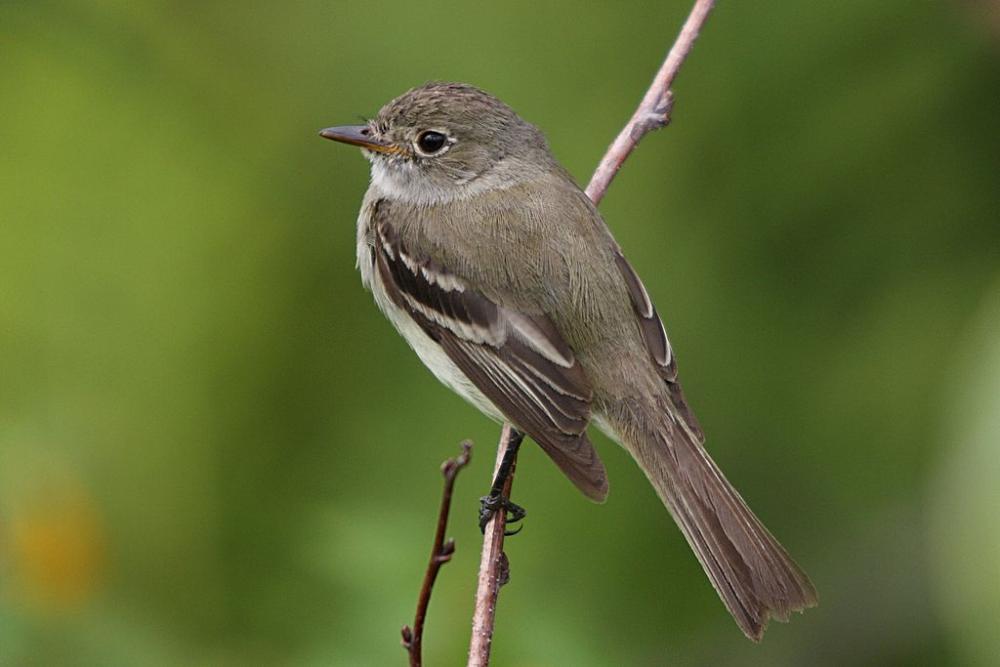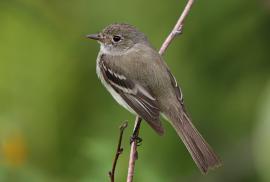Guide to Boreal Birds
Overview
As indicated by its name, the Alder Flycatcher is commonly found in alder and birch thickets near riparian areas and along edges of swamps, bogs and ponds. These birds hunt in the airspace below the canopy of tall alders in swamps or along creeks. They sit erect on a twig, then dart out after flying insects. Alder Flycatcher is a poorly known species and was first described as a species as late as 1974. It feeds almost exclusively on insects caught in the air or gleaned from foliage of trees and shrubs. Look for these gnat kings to begin arriving around the end of May and leaving for their wintering grounds in August. Habitat alteration of North America by European settlement was initially favorable to Alder Flycatcher populations as dense climax forests were replaced by successional or second growth habitats, which the species prefers. It has a more northerly distribution than its close relative the Willow Flycatcher. The Alder Flycatcher came to be considered distinct from the Willow when studies revealed that the song patterns and breeding habits of these species differed. In the fall, when they do not sing, they are indistinguishable.
Description
5-6" (13-15 cm). Slightly smaller than a House Sparrow. Dull gray-green above, whitish below, with 2 dull white wing bars and narrow white eye ring (often not noticeable). Indistinguishable in appearance from Willow Flycatcher, and best identified by voice, breeding habitat, and nest.
Voice
A burry fee-bee-o, rather different from the wheezy fitz-bew of the Willow Flycatcher.
Nesting
3 or 4 white eggs, finely speckled with brown, in a loose cup of grass with little or no plant down, placed in a low bush or sapling.
Habitat
Alder swamps, streamside and lakeside thickets, and second-growth forests.
Range/Migration
Breeds from Alaska east through Manitoba to Newfoundland and south to British Columbia, Great Lakes region, and southern New England. Winters in tropics.



